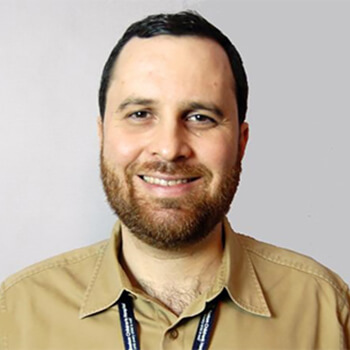New Approach for Regenerating the Injured Optic Nerve

Principal Investigator
Ephraim Trakhtenberg, PhD
University of Connecticut Health Center
Farmington, CT, USA
About the Research Project
Program
Award Type
Standard
Award Amount
$150,000
Active Dates
July 01, 2017 - June 30, 2019
Grant ID
G2017204
Goals
The biological molecular mechanisms controlling the growth of connections in the central nervous system (CNS) are still poorly understood. The inability of the eye to regenerate such connections to the brain is the key reason why vision is lost from optic nerve damage, which can happen in a disease such as glaucoma, cannot be restored. We propose to identify novel biological regulators of the intrinsic ability of the retinal cells to regrow such connections between the eye and the brain. These studies could lead to the development of therapeutics for restoring simple visual abilities to those who became blind due to angle-closure glaucoma, and possibly other types of glaucoma.
Summary
Currently, no treatment exists for clinical use that could induce regeneration of retinal ganglion cell (RGC) axons for restoring vision loss due to optic neuropathy caused by angle-closure glaucoma. Favorable results from the completion of the proposed project are expected to provide much-needed pre-clinical proof-of-concept data for translation to clinical trials evaluating treatments for the acute phase of angle-closure glaucoma. Such therapeutics would be particularly promising if administered in conjunction with trophic factors to support the health of injured RGCs.
Our approach is innovative in that we propose to study a novel group of bioinformatically-predicted factors, which we hypothesize cooperate in controlling RGC axon growth and regeneration. We will leverage state-of-the-art bioinformatic and biological approaches for investigating how these factors interact in combination to regulate axon growth during RGC development and test the potential of such factors for regenerating RGC axons in a rodent model of optic nerve injury.
The scientific knowledge gained from this research could be paradigm-shifting for understanding the regulation of axon growth and regeneration in the CNS. Furthermore, the success of this project can lead to the development of novel axon-regenerating therapeutics that could transform the clinical treatment of angle-closure glaucoma and other types of optic neuropathies, as well as have the potential to be adapted to regenerating the long-distance axonal projections damaged by spinal cord injury, brain trauma, and white matter stroke.
Grants
Related Grants
National Glaucoma Research
Why Certain Retina Ganglion Cells Stay Strong in Glaucoma
Active Dates
July 01, 2024 - June 30, 2026

Principal Investigator
Mengya Zhao, PhD
Why Certain Retina Ganglion Cells Stay Strong in Glaucoma
Active Dates
July 01, 2024 - June 30, 2026

Principal Investigator
Mengya Zhao, PhD
National Glaucoma Research
Pressure-Induced Axon Damage and Its Link to Glaucoma-Related Vision Loss
Active Dates
July 01, 2024 - June 30, 2026

Principal Investigator
Bingrui Wang, PhD
Pressure-Induced Axon Damage and Its Link to Glaucoma-Related Vision Loss
Active Dates
July 01, 2024 - June 30, 2026

Principal Investigator
Bingrui Wang, PhD
National Glaucoma Research
Boosting Neuronal Energy to Improve Vision in Glaucoma
Active Dates
July 01, 2023 - June 30, 2025

Principal Investigator
Adriana Di Polo, PhD
Boosting Neuronal Energy to Improve Vision in Glaucoma
Active Dates
July 01, 2023 - June 30, 2025

Principal Investigator
Adriana Di Polo, PhD



